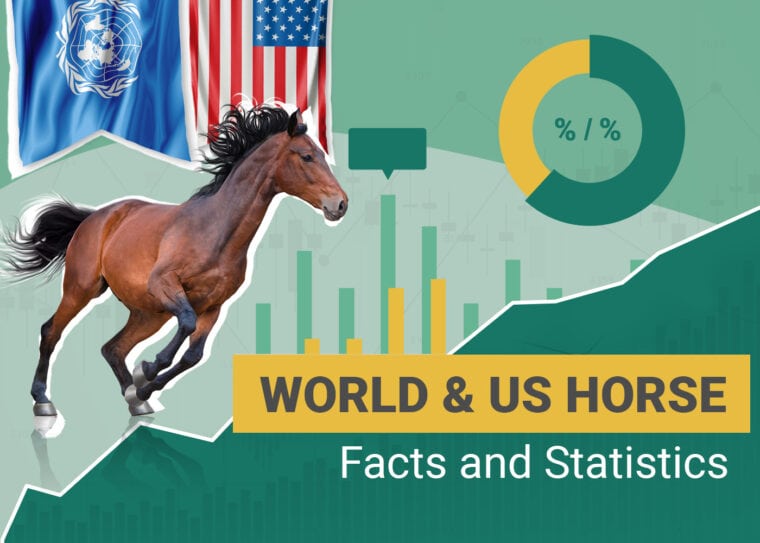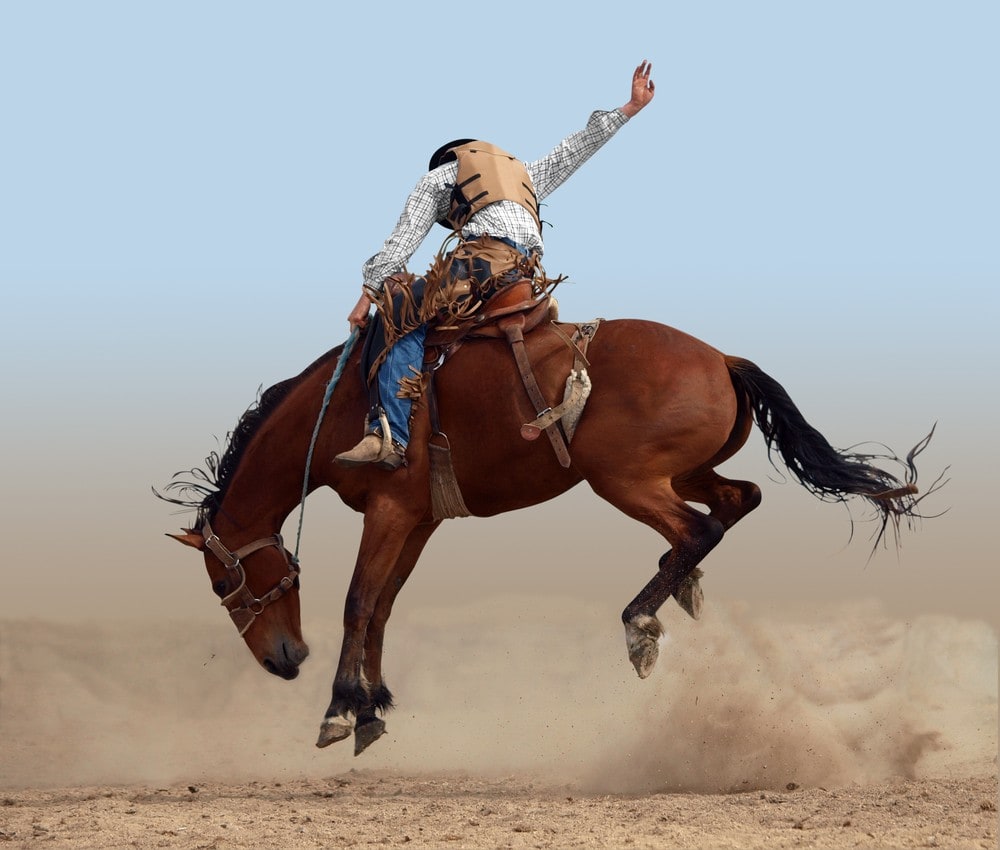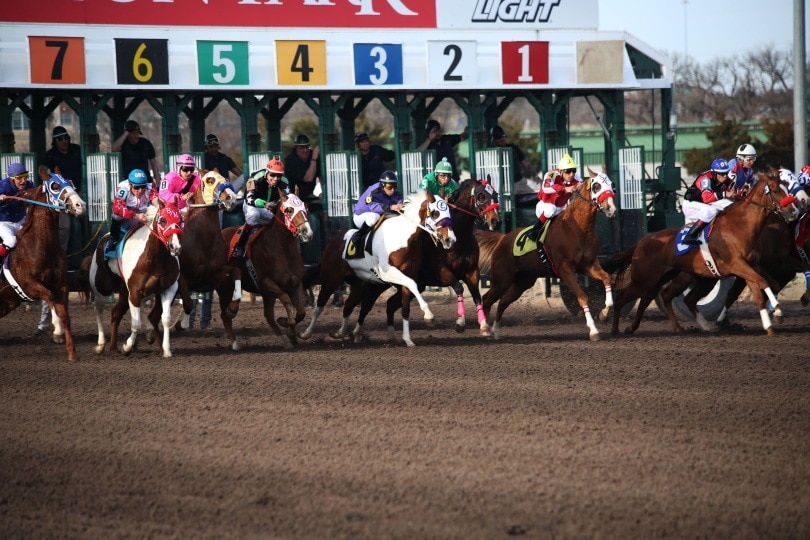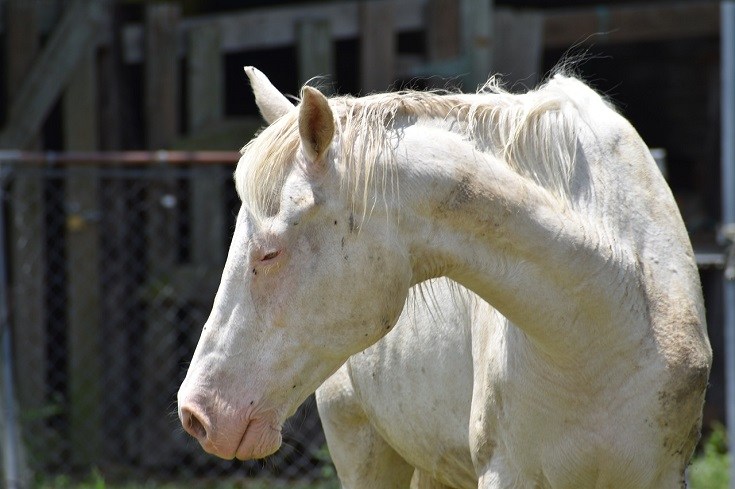
Click to Skip Ahead
Note: This article’s statistics come from third-party sources and do not represent the opinions of this website.
When we picture the creatures animal lovers adore most, horses aren’t usually at the forefront of their minds. However, horses have always been very important to society in terms of the services that they provide. It makes sense that when it comes to animal-related industries, the horse industry is one of the most prominent.
Given its importance, it’s critical to learn everything you can about it to ensure that animals are treated ethically. That’s why, if you’re an animal lover, you may be surprised and even saddened by some of the facts and statistics that we’ve gathered related to the horse industry.
Keep reading for the truth about these majestic animals, where we look at 15 horse statistics all animal lovers should know, including:
The 15 Horse Statistics
- The horse industry contributes $177 billion to various sectors of the US economy.
- There are an estimated 6.6 million horses in the United States.
- The foal crop is expected to decrease by 500 this year.
- Many racehorses never have a home or form bonds with other people or horses.
- Many racehorses become addicted to drugs.
- Between 700 and 800 racehorses are injured and die every year.
- Limb injuries are the leading cause of death in racehorses.
- There were 1.41 fatalities per 1,000 starters at North American Racetracks in 2020.
- The Burns Amendment repealed the prohibition of the commercial sale of wild horses and burros for slaughter.
- In 2007, all facilities in the U.S. that slaughtered horses for consumption were closed.
- Tens of thousands of horses are sent to Canada and Mexico for slaughter every year.
- Approximately 50,000 Mustangs were rounded up by the Bureau of Land Management in 2012.
- Equestrian sports are the leading cause of sports-related traumatic brain injury in the United States.
- The overall injury rate for horse riding is low compared to other sports.
- Rodeo events are the most likely equestrian-related activities that result in injury.

The Horse Industry Statistics
1. The horse industry contributes $177 billion to various sectors of the US economy.
(American Horse Council)
According to the National Equine Economic impact study of 2023, the equine industry employs 2.2 million people. The workforce includes veterinarians, breeders, nutritionists, trainers, journalists, chemists, farriers, and police officers.

2. There are an estimated 6.6 million horses in the U.S.
(World Population Review)
In 2017, the US horse population was 7.2, and although it’s slightly smaller now, more people are employed in the industry. Texas has the largest population of horses, followed by California and Florida.
3. The foal crop is expected to decrease by 500 this year.
(Horse Racing Nation)
The foal crop is the number of horses born each year, and in the racing industry, it only includes thoroughbred horses. The Jockey Club predicts that the foul crop will only reach 18,000 this year, which is 500 fewer horses than in 2023.

4. Many racehorses never have a home or form bonds with other people or horses.
(PETA)
Racehorses are constantly on the go, traveling to different racetracks in different states and countries. There are many people involved in their care, including jockeys, trainers, handlers, and veterinarians. They don’t have time to establish bonds with other people or horses.
5. Many racehorses become addicted to drugs.
(PETA)
Sometimes, trainers give racehorses drugs so they can race even when they aren’t physically able to. Some of the most common include steroids and anti-inflammatories that can make a horse run faster or ease pain.

Horse Racing Death Statistics
6. Between 700 and 800 racehorses are injured and die every year.
(PETA)
Horse racing is a competitive sport, often with high monetary stakes involved. Horses are not given much time to rest. Many are euthanized due to not handling surgery well and as a way to save money for veterinary expenses and fees.
Although 700 to 800 deaths seem high, it doesn’t account for the fatalities during training. Some estimate that the figure could be as high as 2,000 deaths a year.
7. Limb injuries are the leading cause of death in racehorses.
(National Geographic)
Even minor injuries can result in death, including strained tendons and hairline fractures. These two injuries are hard to diagnose and can become worse during consecutive races. Other causes of death include respiratory and digestive issues as well as other organ system disorders.

8. There were 1.41 fatalities per 1,000 starters at North American Racetracks in 2020.
(Thoroughbred Daily News)
This is the lowest number of fatalities reported since the Jockey Club first started compiling injury and fatality rates in 2009. The 1.41 fatalities represent a 29.5% decline since that same year. However, on one track in Santa Anita, California, in 2019, 42 horses died.
Horse Slaughter Statistics
9. The Burns Amendment repealed the prohibition of the commercial sale of wild horses and burros for slaughter.
(Wild Horse Education)
In 1971, the Free-Roaming Wild Horses and Burros Act was passed to protect wild horses from being captured, harassed, or slaughtered. In 2004, the Burns Amendment was passed in Montana which repealed the 1971 Act.
10. In 2007, all facilities in the U.S. that slaughtered horses for consumption were closed.
(Animal Welfare Institute)
A court ruling upheld a Texas law that banned horse slaughter. However, it doesn’t prevent horses from being shipped to other countries for slaughter for human consumption.
11. Tens of thousands of horses are sent to Canada and Mexico for slaughter every year.
(Animal Welfare Institute)
Since horse slaughtering facilities were closed in the U.S., the number of horses sent to Canada and Mexico for slaughter increased from the years prior to 2007.
The year 2012 saw the highest number, with over 166,500 sent to these two countries. In 2023, 17,997 horses were sent to Mexico, and 2,373 were sent to Canada.

12. Approximately 50,000 Mustangs were rounded up by the Bureau of Land Management (BLM) in 2012.
(Equine Advocates)
The BLM claimed that they never sold the horses for slaughter. However, a study by the U.S. Department of the Interior found that 1,800 of these horses were sold to a rancher who was known for selling horses to Mexico for slaughter. In 2023, 13,000 burros and 69,000 wild horses lived on BLM land in the west.
Horse Riding Danger Statistics
(Ohio State University)
Approximately 10%–30% of horse riding-related injuries are head injuries. The average hospital stay for horse-related injuries is 5–6 days, but it could be longer for head injuries due to their severity.

Horse Riding Injury Statistics
14. The overall injury rate for horse riding is low compared to other sports.
(Ohio State University)
There are approximately 3.7 horse riding injuries for 1,000 hours of participation in the sport. This is compared to 10-35 injuries in football, 9.1 in basketball, and 7.5 in ice hockey. However, horseback riding injuries are more likely to result in hospitalization.
(Ohio State University)
Bareback bronc riding is the most likely horse-related rodeo event to result in injury. Out of 1,000 competitors, 72 are injured in this event. The only rodeo event that causes more injuries is bull riding at 141.

Frequently Asked Questions
Is horse racing still popular?
Horse racing is a sport that has been around since the 12th century, but it is not as popular today as it used to be. This is mainly due to the discovery of how the horses are treated, especially after dozens of horses died at one California racetrack, Santa Anita, in one year. The unethical treatment of horses, including drugging and abuse, has caused many people to boycott the sport.
In fact, the drugging of horses has been one of the most controversial topics in the industry, including the concerns surrounding the lack of a singular regulatory body to monitor the safety of the horses. Another concern surrounding horse racing was a loss of money due in part to the coronavirus pandemic. Many races were canceled or put on without spectators, which posed a huge problem for bettors who make a lot of their money betting on horse racing.
However, despite these problems, horse racing is still a multi-billion-dollar industry. New legislation to form a regulatory body under the U.S. Anti-Doping Agency passed and is expected to start in July 2022. Hopefully, this will help diminish some of the controversy surrounding horse racing and raise its popularity, especially with young people.
(The New Yorker)

Is it illegal to drug horses for racing?
The answer to this question is complicated. Some drugs are legal in certain doses and cases, and each state has its own anti-doping regulations and rules (which further verify the need for a single governing body to control doping). Doping horses not only encourages cheating but is also harmful to the horses.
Some drugs are banned in horse racing, such as steroids or drugs that allow the body to send more blood to the horse’s muscles. However, others are considered therapeutic and are not banned in horse racing. Sometimes, they are used to ease or mask pain, but in a lot of cases, they are abused. However, due to varying regulations and the lack of a central governing body, it can be hard to determine at what point giving a horse therapeutic drugs turns into doping or cheating.
(National Geographic)
What drugs are abused in horse racing?
Two drugs are legal to use in horse racing but are commonly abused. The first is Lasix, which is used to treat human patients with heart, liver, or kidney problems. But it can also supposedly “prevent bleeding in the lungs,” which is why it is often given to horses on race day. The drug makes horses lose weight and run faster since it is a diuretic. However, giving Lasix to horses has been banned on race day since 2021.
The other type of drug that is commonly abused in horse racing is an anti-inflammatory steroid. It’s used to prevent pain and is often given to horses recovering from injury. However, it is often given to already injured horses on race day, which can worsen the injuries because the horse doesn’t know when to quit while medicated. The Horseracing Integrity and Safety Authority, the new governing body, is designed to implement regulations, testing, and drug abuse enforcement in horse racing.
(National Geographic)

Why are horses slaughtered?
The main reason that horses are slaughtered is for consumption. However, it is dangerous for humans to consume horse meat. Horses collected for slaughter come from different sources, and there is no system designed to track their medical history.
The U.S. Department of Agriculture does not have the budget to implement a system to determine the safety of horse meat or develop a program for slaughtering horses. That factor, combined with the fact that 80% of Americans oppose horse slaughtering, led to the ban on horse slaughtering facilities in America. However, there are other countries that slaughter horses, as well as countries that consume horse meat regularly.
(The Humane Society of the United States)
Is horse slaughtering inhumane?
Much of the opposition to slaughtering horses in the United States is due to its inhumanity. There is no way to make it humane because of the horse’s biology. Horses tend to be skittish, which makes it hard to tranquilize and humanely euthanize them. Because of that, horses are often physically abused and tortured, which only prolongs their death.
(The Humane Society of the United States)

Conclusion
Many of the facts and statistics you learned in this article may have been surprising and even a little upsetting. Although some sectors of the horse industry are okay in terms of ethics and the overall treatment of horses, others are not.
It’s important to remember that horses have feelings, too. Increased education and awareness of the problems in this industry can decrease the abuse and otherwise unethical behavior that horses experience and hopefully prevent it from happening altogether.
See Also:
- Canadian Horse Industry Statistics and Data
- Australia Horse Statistics All Animal Lovers Should Know
Featured Image Credit: Horsemen, Shutterstock







